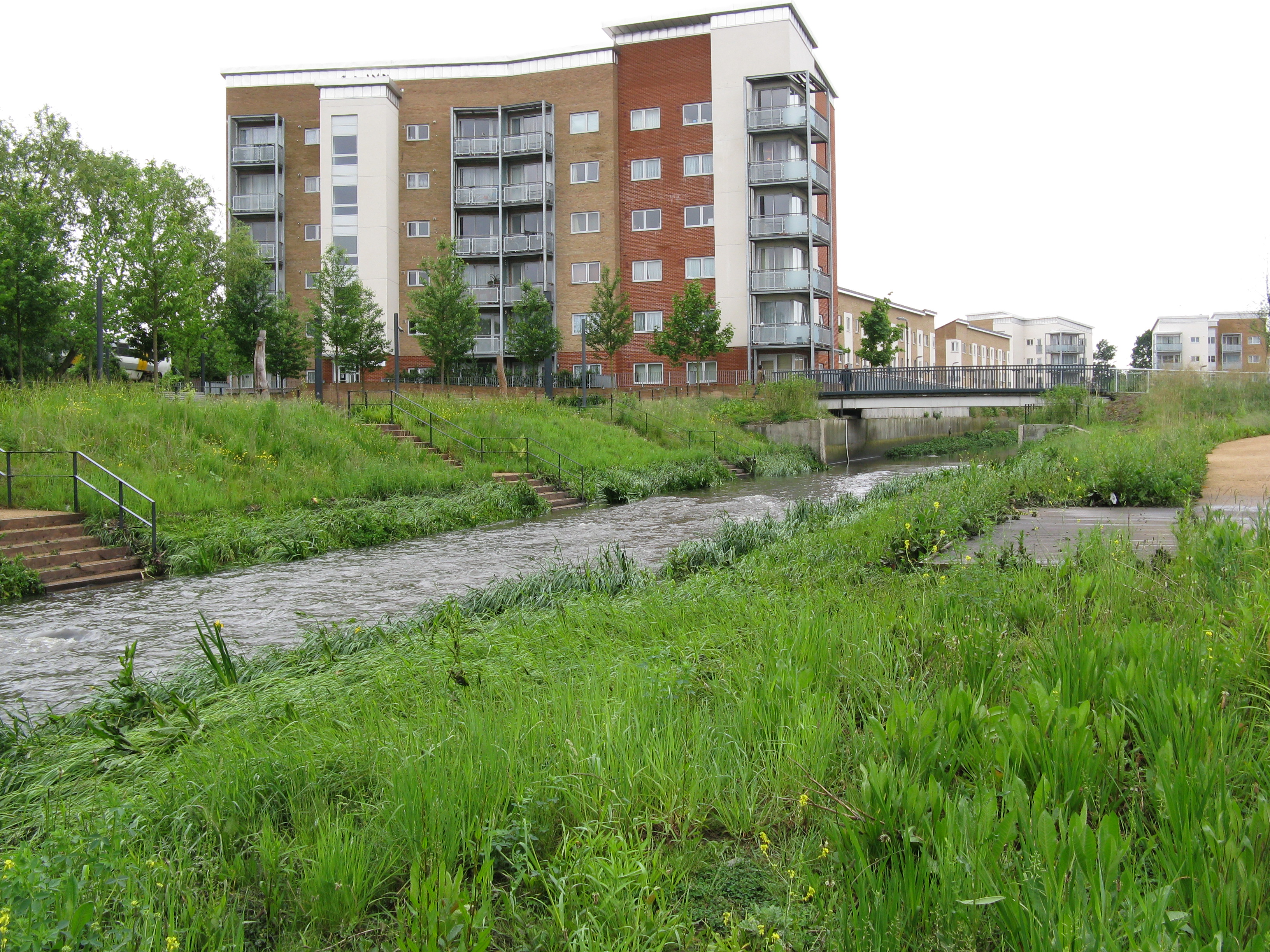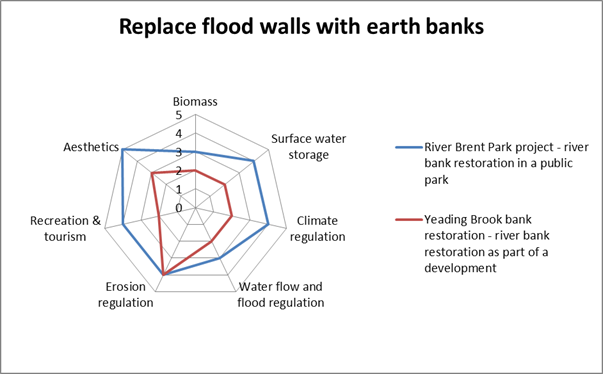This activity is not specifically a managed realignment – it is about changing walls of ‘hard defence’ (i.e. walls of brick / concrete) and replacing them with a ‘soft’ or ‘green’ solution. This could mean replacing a flood wall with a landscaped earth embankment. This means there is the potential to include additional environmental enhancements, such as an aquatic shelf at the base of the banks or planted coir roll in the same location to encourage plant establishment.
 Future management of the embankment should encourage a more diverse grassland community through an appropriate cutting regime (see ‘Sensitive timing of vegetation management’ and ‘Sensitive techniques for managing vegetation (beds and banks)’.
Future management of the embankment should encourage a more diverse grassland community through an appropriate cutting regime (see ‘Sensitive timing of vegetation management’ and ‘Sensitive techniques for managing vegetation (beds and banks)’.
To be effective, this activity should be part of a wider riparian restoration / improvement measure, unless there is no space and all that can be done is to change the material of the flood walls.
Techniques
Techniques that can be used to implement this environmental improvement are limited by this activity:
- Design out the requirement for flood walls by replacing them with embankments
- Remove existing flood walls and replace with earth embankments
Benefits
Replacing flood walls with earth banks can deliver a wide range of direct and indirect benefits, including:
- Direct ecosystem benefits associated with the creation of new habitats (grassland instead of concrete), including maintenance of and improvements to biodiversity
- Climate change adaptation, allowing habitats and species to adapt to changing conditions
- The provision of opportunities for recreational use of new land
- The provision of opportunities for increased amenity value of the area
Case Study Benefits
This diagram displays a comparison of benefits scores (using a high-level ecosystem service assessment methodology) associated with the techniques used in each case study. More details on the methodology can be found here.